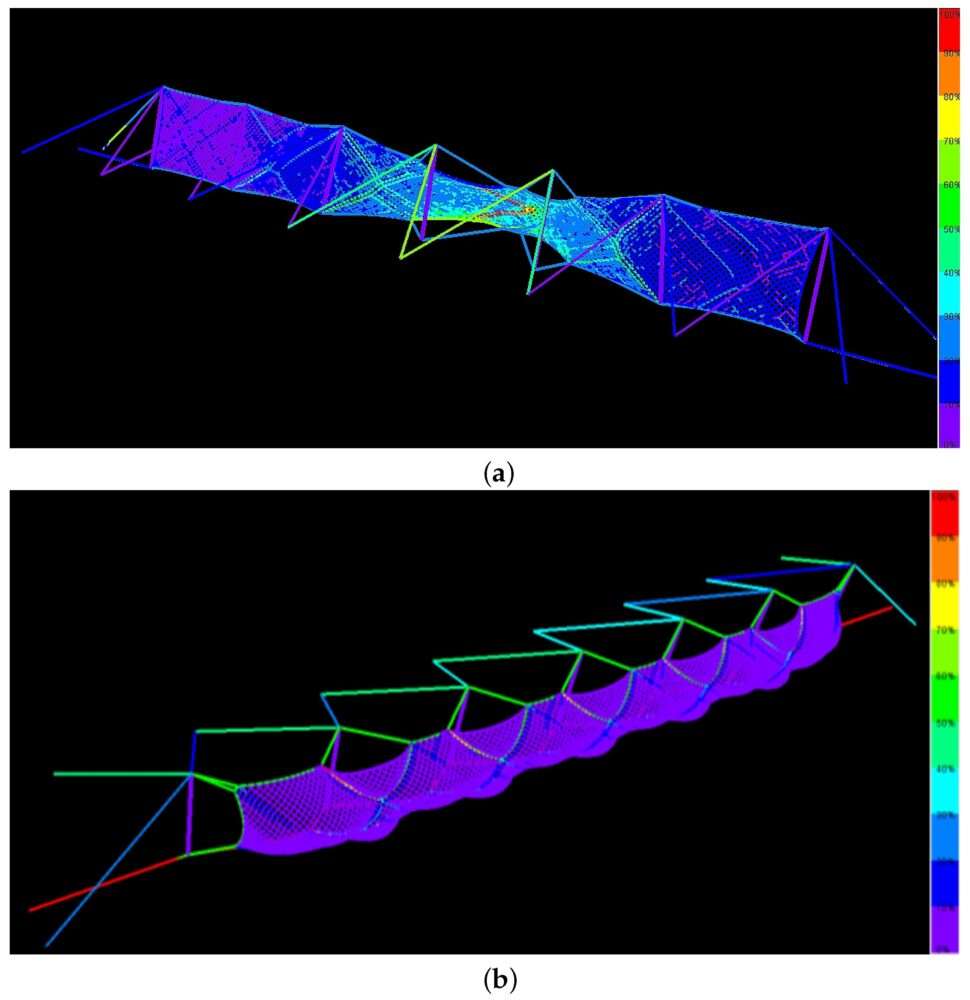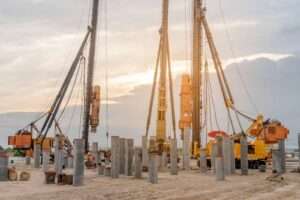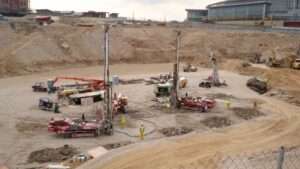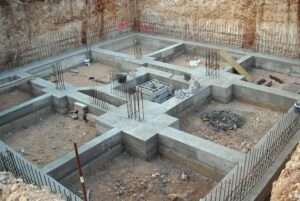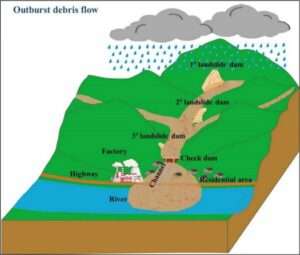Rockfalls are a serious hazard in mountainous and hilly regions, where loose rocks and debris can be dislodged and fall, posing risks to infrastructure and public safety. Highways, railways, and residential areas situated near steep slopes are particularly vulnerable to the destructive impact of falling rocks. One of the most effective methods for controlling rockfall hazards is the use of rockfall barriers. These systems play a critical role in protecting people, structures, and the environment from the potentially devastating consequences of rockfall events.
What Are Rockfall Barriers?
Rockfall barriers are protective structures designed to prevent or mitigate the impact of falling rocks by capturing or diverting them before they can reach areas of high risk, such as roads, railways, or urban development. These barriers are typically made of steel cables, mesh, and other materials that work together to absorb the energy of falling rocks, prevent their further movement, and dissipate their force.
Depending on the severity of the hazard and the specific needs of the site, rockfall barriers can be categorized into several types:
- Flexible Barriers: These barriers are made from wire mesh or steel cables that are designed to stretch upon impact. Their flexibility allows them to absorb the energy of falling rocks and prevent further damage.
- Semi-Rigid Barriers: Combining flexibility with rigid components, semi-rigid barriers offer additional energy absorption while providing stability in the face of large rockfalls.
- Rigid Barriers: Made of concrete or steel panels, rigid barriers are designed to stop rocks from reaching the ground and offer the highest level of protection. These systems are typically used in areas where large rocks or high-speed impacts are likely.
How Do Rockfall Barriers Work?
Rockfall barriers operate by absorbing the energy from falling rocks and preventing them from traveling further. The basic functionality of these barriers involves:
1.Energy Absorption: When rocks collide with the barrier, the system absorbs their kinetic energy, which reduces the speed and force of the rocks. This is achieved through the flexibility of the wire mesh or the tensioning of steel cables, which stretch and dissipate the energy.
2.Diverting Rocks: In some systems, rockfall barriers are designed to divert rocks to safer areas. The design of the barrier—whether it’s a combination of angled mesh or rigid panels—can be adjusted to redirect debris away from critical areas.
3.Containment: By containing rocks and preventing them from passing through or around the system, barriers reduce the likelihood of rockfall impacts on infrastructure and human life.
4.Redirection of Smaller Rocks: Smaller rocks that are not large enough to trigger the full barrier system are redirected to lower sections of the slope or into designated catchment areas.
Key Types of Rockfall Barriers
Different types of rockfall barriers are suited to various levels of risk and site conditions. The most common types include:
1.Flexible Rockfall Barriers
Flexible rockfall barriers are commonly used in areas with moderate to high rockfall risk. These barriers consist of a mesh system that is mounted on tensioned cables anchored to the slope. Upon impact, the mesh stretches and absorbs the energy of falling rocks.
- Advantages: Flexible barriers are versatile, cost-effective, and can be quickly installed. They are ideal for slopes where smaller rocks or debris are the primary concern.
- Disadvantages: They may not provide adequate protection against large or fast-moving rocks.
2.Semi-Rigid Rockfall Barriers
Semi-rigid barriers combine the energy-absorbing qualities of flexible systems with the stability and strength of rigid components. These systems are ideal for areas at high risk of large rockfalls or in regions with challenging terrain.
- Advantages: These systems offer better energy absorption than purely flexible systems and can handle larger rocks.
- Disadvantages: They are more expensive and require more complex installation than flexible barriers.
3.Rigid Rockfall Barriers
Rigid barriers are the most robust type of rockfall mitigation system, designed to withstand high-impact forces. These barriers are typically made from heavy-duty steel or concrete and are ideal for situations where large rocks or high-energy impacts are expected.
- Advantages: Rigid barriers offer the highest level of protection and can handle the largest rocks and fastest-moving debris.
- Disadvantages: They are more costly and require more extensive installation, often involving significant construction work.
Benefits of Rockfall Barriers
Rockfall barriers offer a wide range of benefits for rockfall mitigation, making them an essential tool for protecting infrastructure and public safety:
1.Effective Protection for Infrastructure: The primary benefit of rockfall barriers is their ability to protect critical infrastructure, such as roads, railways, and buildings, from rockfall damage. These systems minimize the risk of destruction, delays, and costly repairs.
2.Increased Safety for People: By preventing rocks from reaching areas of human activity, rockfall barriers significantly reduce the risk of injury or fatalities. This is especially important for roadways, highways, and areas with high pedestrian or vehicle traffic.
3.Cost-Effective Solution: When compared to other rockfall mitigation methods, such as slope grading or full-scale slope stabilization, rockfall barriers are often more cost-effective. The relatively low installation and maintenance costs make them an appealing choice for large-scale rockfall protection projects.
4.Minimal Environmental Impact: Unlike traditional methods that may require large-scale excavation or deforestation, rockfall barriers have minimal impact on the surrounding environment. They allow natural vegetation to remain intact and prevent soil erosion.
5.Long-Term Durability: Modern rockfall barriers are designed to be durable and require minimal maintenance over time. Many systems are built with corrosion-resistant materials that withstand exposure to harsh weather conditions, ensuring reliable performance for decades.
6.Versatility: Rockfall barriers can be adapted to various terrain types, from steep mountainsides to rocky cliffs. They can also be tailored to different levels of risk, ensuring that the appropriate barrier is selected for each specific site.
Applications of Rockfall Barriers
Rockfall barriers are used in a variety of applications, particularly in areas where rockfall poses a significant risk to human safety or infrastructure:
- Highways and Railways: Roadways and rail tracks often run through mountainous or hilly terrain where rockfall is a serious concern. Rockfall barriers can be installed along vulnerable sections to prevent debris from disrupting traffic and causing accidents.
- Urban Areas: In regions where urban development is situated near rocky slopes or cliffs, rockfall barriers protect residential and commercial properties from potential rockfall incidents.
- Mining and Quarrying: In mining operations, rockfall barriers help secure the perimeter of quarries or excavation sites, keeping workers and equipment safe from falling debris.
- Hydroelectric Dams: Dams and other large infrastructure projects built near steep rock formations can benefit from rockfall barriers to prevent rockfalls from damaging the structures or affecting operations.
Conclusion
Rockfall barriers are an essential tool in geotechnical engineering for mitigating the risks of falling rocks in vulnerable areas. Whether designed to be flexible, semi-rigid, or rigid, these systems provide effective protection against rockfall hazards, safeguarding infrastructure and public safety. By preventing rockfalls from reaching critical areas, rockfall barriers help ensure that communities remain safe, infrastructure remains intact, and costly damage is minimized. As the risks associated with rockfall continue to grow in regions with challenging terrain, the role of rockfall barriers will only become more important in protecting both people and property from the dangers of falling debris.


